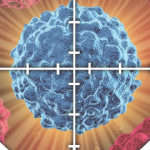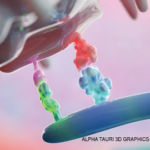At this point, rheumatology was consulted to rule out myositis. The exam was significant for decreased strength of hip flexion and knee extension (2/5); proximal girdle weakness of her upper and lower extremities bilaterally; ptosis of the right eyelid; stridor; pooling of upper airway secretions in the posterior pharynx; coarse breath sounds in both lungs; and multiple, bullous, 0.5–1.5 cm, round, erythematous plaques on both distal lower extremities. Pulse oximetry was 90% at rest, and the patient was started on oxygen therapy.
A chest X-ray showed right basilar atelectasis and a small pleural effusion. On pulmonary evaluation, a computed tomography (CT) scan of the lung did not show interstitial lung disease, alveolitis or pulmonary embolus, but did show mucous collections in the distal airway. Ear, nose and throat evaluation suggested laryngeal and vocal cord edema contributing to stridor. A modified barium swallow was concerning for oropharyngeal dysphagia, and a nasogastric tube had to be inserted for enteral nutrition.
Her aldolase was elevated at 62 u/L (upper limit of normal [ULN] <7.5 units/liter). Autoimmune serologies and specific markers of myositis were negative—including ANA, anti-dsdna, anti-smith, anti-RNP, SSA/SSB, anti-Scl, anti-striational, anti-acetylcholine receptor binding (Ach-Ab), HMG Co-A reductase, anti-Jo, anti-SRP, anti-Mi2 and myositis panel (PL-7, PL-12, MI-2, KU, EJ, OJ). A thyroid panel and antibodies were normal. CA125 markers and CTs of her chest, abdomen and pelvis were negative for recurrence of ovarian cancer. Consultations with the gynecology and oncology departments deemed the cancer in remission.
The dermatologist performed a punch biopsy of the pretibial rash. It showed perivascular inflammatory cell infiltrate with lymphocytes, histiocytes, rare eosinophils, a few plasma cells and neutrophils. The infiltrate subtly obscured the dermo-epidermal junction where there was vacuolar alteration and necrotic keratinocytes within the epidermis. Signs of focal ulceration and subepidermal clefting were evident. A PAS stain was negative for hyphae or basement membrane zone thickening. We were concerned about a drug eruption, manifestation of collagen vascular disease or early autoimmune vesiculobullous disorder.
Nerve conduction studies and electromyography were performed in the right upper and right lower extremities and were consistent with myopathic change of the muscles without suggestion of large fiber polyneuropathy or necrosis. Specifically, there was low amplitude of the right sural sensory response and right tibial motor response and absence of right peroneal F right tibial H reflexes. Skeletal muscle biopsy of the left quadriceps revealed immune-mediated myopathic disorder, identified by a positive HLA Class I immunohistochemistry study, with focal myofiber necrosis/regeneration, mild inflammation and type 2 myofiber atrophy. The findings were consistent with an immune-mediated (inflammatory) myopathy, subtype not specifically identified (see Figure 2).



